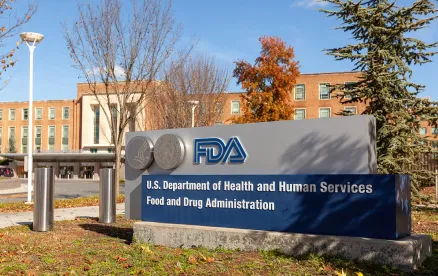FDA issued a proposed rule on September 28, 2022 to update the definition of “healthy” by specifying new criteria by which the term can be used in food labeling. Previously, FDA explained that “healthy” is an implied nutrient content claim and the FDA’s criteria for “healthy” were based on certain levels of individual nutrients.
Under the new proposed rule, foods may be labeled as “healthy” if they (1) contain a meaningful amount of food from at least one of the food groups or subgroups recommended by the current FDA Dietary Guidelines for Americans (“Dietary Guidelines”) (such as vegetables) and (2) follow specified limits on certain nutrients, namely, added sugars, saturated fat and sodium.
Comments for the proposed rule must be submitted by December 28, 2022. Presently, the FDA plans to provide companies 3 years to comply once the rule is final. Thus, food and beverage companies would not be required to comply with the final form of the proposed rule or to adjust their labels until no earlier than 2026.
Background
In 1994, FDA issued regulations defining implied nutrition content claims as those which implied that a food may help consumers maintain healthy dietary practices as a result of its nutrient content, or that a nutrient was present or absent in a certain amount. In another regulation, FDA specifically permitted use of the term “healthy” and related terms (e.g., “healthful”) as implied nutrient content claims only if the food items did not exceed upper limits on certain individual nutrients, specifically, total fat, saturated fat, cholesterol and sodium. Additionally, the food had to contain the minimum amount of at least one nutrient whose consumption FDA encouraged, such as vitamin A, vitamin C, calcium, iron, protein, and dietary fiber.
The current “healthy” definition led to the anomalous situation where foods containing certain quantities of peanuts (which science now suggests have “good” fats and are high in protein), for example, could not be labeled “healthy,” but some sugary breakfast cereals could. As a result of a citizen petition by a leading nutrition bar company raising this concern, FDA issued guidance in 2016 which expanded permitted uses of the term “healthy,” and began soliciting information and comments to revise FDA’s regulations. FDA also indicated it would exercise “enforcement discretion” (i.e., not enforce current regulations) on labeling of foods, that, for example, had a fat profile of predominantly monounsaturated and polyunsaturated fats, but that did not meet the regulatory definition of “low fat.”
Overview of the Proposed Rule
The proposed rule aims to better account for current nutritional science and how nutrients in different food groups may interact to impact health. The update focuses on overall diet by going “beyond just individual nutrients to also incorporate the variety of nutrients present in a food” and to “better reflect the overall nutrient content of the food.” FDA also intends the proposed rule to align the definition of “healthy” with the updated Nutrition Facts label, Dietary Guidelines and up-to-date nutrition science by requiring that the food bearing a “healthy” claim meet certain criteria for a “Food Group Equivalent,” as explained below.
Also, FDA dropped two of the limiting nutrients (total fat and cholesterol), and included added sugars as a disfavored nutrient (added sugars joins the existing roster of sodium and saturated fat).
Key Takeaways
1. Changed Definition of Implied Nutrient Content Claim
The proposed rule expands the instances when use of the term “healthy” would constitute an implied nutrient content claim requiring compliance with the new regulations.
Current regulations apply when “healthy” is immediately adjacent to a nutrient content claim such as “healthy, 3g total fat.” Under the proposed rule, any information on the label or labeling that places the term “healthy” into a nutritional context (e.g., “healthful addition to your diet”) renders “healthy” an implied nutrient content claim that would have to meet the new requirements of the proposed rule.
2. “Healthy” Incorporates FDA’s New “Food Group Equivalent” Standard
Certain foods, such as raw, whole fruits and vegetables, and water may automatically use the “healthy” claim based on their nutrient content and contribution to an overall healthy diet.
Other foods, however, will not be able to use the “healthy” claim unless the foods meet the “food group equivalent” standard and do not exceed stated limits of saturated fat, sodium and added sugars (discussed below).
To focus consumers on dietary patterns as a whole and align more closely with the Dietary Guidelines, FDA takes a food group approach with a focus on the whole diet in the proposed rule. Under the new approach, the criteria for “healthy” no longer includes minimum amounts of nutrients. Instead, food products will need to contain a certain amount of “food group equivalents” from at least one of the Dietary Guidelines’ recommended food groups. The food group equivalents are as follows:
This is a significant shift in approach.
3. “Healthy” Limits Added Sugars, Sodium and Saturated Fats
Although FDA is focused on the whole diet, its proposed rule still maintains limits on certain nutrients for individual food products. For example, as shown on the chart below, to use a “healthy” claim on a dairy product, the product would need to have at least ¾ cup of dairy and also: (a) not more than 5% of the daily value for added sugars, (b) not more than 10% of the daily value for sodium, and (c) not more than 10% of the daily value for saturated fat. The added sugars limit of 5% of the food’s Daily Value means that, based on a 2,000 calorie/day diet for an adult, a food could not have more than 2.5 grams of added sugars by weight and still use a “healthy” claim.
The chart below, provided by FDA, summarizes by food category how much of each food group equivalent is required and the associated limits on added sugars, sodium and saturated fats:
Of note, separate requirements exist for oils to be considered “healthy.” FDA has proposed different charts for foods that contain more than one food group (a “mixed food”), that would be considered a “main dish”, or that would be considered a “meal.” These charts are available for review in the proposed regulations.
4. New Record-Keeping Requirements
The proposed rule sets forth record-keeping requirements for all manufacturers to facilitate FDA’s evaluation of compliance with the proposed rule. Generally speaking, manufacturers are required to keep records demonstrating compliance with the regulation when that information cannot be gleaned from the food’s Nutrition Facts Label.
Looking Forward
As a result of these proposed changes, FDA expects more food in the marketplace will be able to make use of the “healthy” claim. Currently, just 5% percent of all packaged foods are labeled as “healthy.” Because the proposed updates are not finalized yet, food and beverage companies should carefully evaluate the impact of the proposed rule on their labeling as well as consider providing comments to the proposed rule.





 />i
/>i
